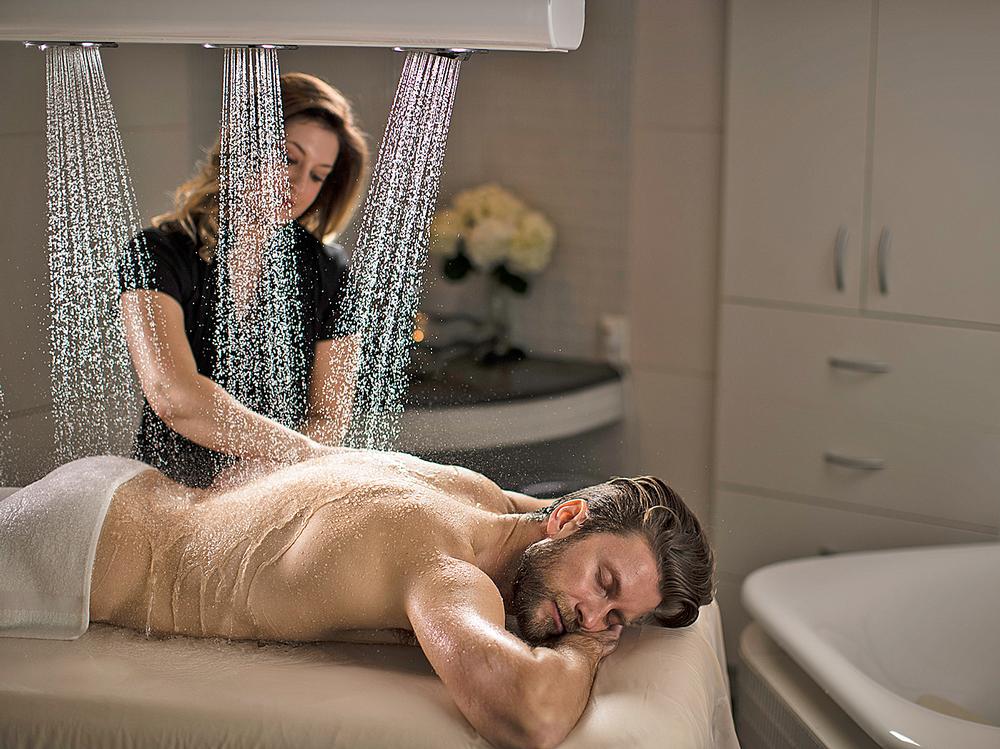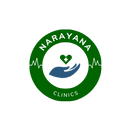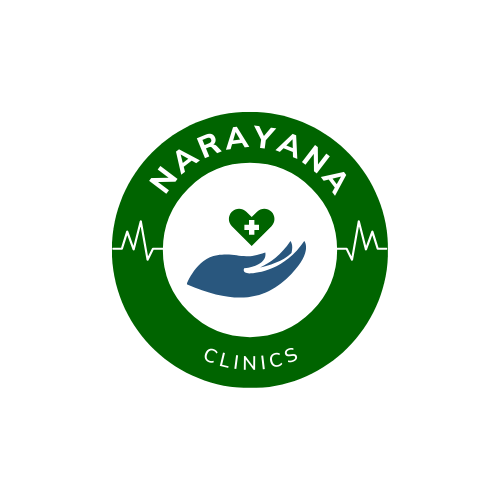Hydrotherapy
Hydrotherapy, also known as water therapy, involves the use of water in various forms and temperatures to treat different health conditions and promote physical and mental well-being. It is an integral part of naturopathy and has been used for centuries for its therapeutic benefits. Hydrotherapy treatments range from simple baths to advanced techniques like water jets, steam, and sauna applications.

Detailed Procedure of Hydrotherapy
Here’s a step-by-step guide to the detailed procedure of hydrotherapy:
1. Consultation and Assessment
Before beginning any hydrotherapy treatment, a thorough consultation and assessment are necessary.
a) Health History Review:
- The practitioner reviews the patient’s health history, including any pre-existing medical conditions, injuries, allergies, and current treatments or medications. Conditions like heart disease, high blood pressure, skin infections, or open wounds may require special precautions or contraindicate certain hydrotherapy methods.
b) Diagnosis:
- The practitioner assesses the patient’s symptoms and overall health to determine which form of hydrotherapy would be most beneficial. Common conditions treated by hydrotherapy include:
- Muscle and joint pain
- Stress and anxiety
- Circulatory and respiratory issues
- Skin conditions (such as eczema or psoriasis)
- Digestive problems
- Arthritis and rheumatism
- Post-surgical recovery
c) Treatment Plan:
- Based on the diagnosis, a tailored treatment plan is created, including the frequency, type, and duration of hydrotherapy sessions.
2. Types of Hydrotherapy and Their Procedures
There are various forms of hydrotherapy, each targeting specific health concerns. Below are the most common types and their detailed procedures.
a) Baths (Full or Partial)
Hydrotherapy baths are among the simplest and most widely used methods. They involve immersing the body fully or partially in water to relieve pain, promote relaxation, and improve circulation.
Full Immersion Bath:
- Procedure: The patient is fully immersed in a bathtub filled with warm water (around 36-38°C or 96-100°F). Essential oils, Epsom salts, or herbs (like chamomile or lavender) may be added to enhance the therapeutic effects. The patient remains in the bath for 15-30 minutes.
- Benefits: Promotes relaxation, relieves muscle pain, and improves blood circulation.
Cold or Hot Contrast Bath:
- Procedure: The patient alternates between soaking in warm water (38-40°C or 100-104°F) for 3-5 minutes and cold water (15-20°C or 59-68°F) for 30-60 seconds. This is repeated 3-4 times.
- Benefits: Stimulates circulation, reduces inflammation, and eases joint pain.
Sitz Bath:
- Procedure: A sitz bath involves sitting in a shallow bath with water covering only the buttocks and hips. The temperature of the water may vary depending on the condition being treated.
- Warm Sitz Bath: Used to relieve muscle tension, pelvic pain, and hemorrhoids.
- Cold Sitz Bath: Applied to treat inflammation and improve blood flow.
- The treatment lasts for 10-15 minutes.
- Benefits: Alleviates conditions like hemorrhoids, urinary infections, or menstrual cramps.
b) Steam Therapy (Steam Bath, Sauna, and Steam Inhalation)
Steam therapy uses steam and heat to open the pores, relax muscles, detoxify the body, and improve respiratory health.
Steam Bath:
- Procedure: The patient sits in a steam room where the air is saturated with moisture (humidity near 100%) and the temperature is set between 40-45°C (104-113°F). The session typically lasts 15-20 minutes, followed by a cool shower or immersion to close the pores and normalize body temperature.
- Benefits: Opens pores, detoxifies the body, and improves skin conditions and circulation.
Sauna:
- Procedure: The patient sits in a dry heat environment where the temperature ranges from 60-90°C (140-194°F). The session lasts 10-20 minutes, followed by a cooling phase. This process can be repeated 2-3 times.
- Benefits: Enhances circulation, reduces stress, relieves muscle pain, and detoxifies the body through sweating.
Steam Inhalation:
- Procedure: The patient inhales steam generated from hot water, often with the addition of essential oils (such as eucalyptus or peppermint) to relieve respiratory conditions.
- Benefits: Treats respiratory issues like sinus congestion, colds, asthma, and bronchitis.
c) Cold Water Applications
Cold water is used to invigorate the body, reduce inflammation, and stimulate blood flow.
Cold Compress:
- Procedure: A cloth soaked in cold water (or ice packs) is applied to the affected area, typically for 5-10 minutes. This method is commonly used to reduce swelling, relieve headaches, or treat localized pain.
- Benefits: Reduces inflammation, eases headaches, and treats injuries.
Cold Shower:
- Procedure: The patient takes a short, cold shower (temperature around 15-20°C or 59-68°F) for 1-2 minutes. Cold showers are invigorating and increase alertness.
- Benefits: Boosts circulation, reduces muscle soreness, and promotes alertness.
Cold Plunge:
- Procedure: The patient fully immerses in a cold plunge pool, with water temperatures around 10-15°C (50-59°F), for 1-3 minutes.
- Benefits: Reduces muscle inflammation and speeds recovery after intense physical activity.
d) Compresses and Wraps
Herbal compresses and wraps are used to apply either cold or heat combined with natural ingredients to specific parts of the body.
Hot Compress:
- Procedure: A cloth soaked in hot water (about 38-45°C or 100-113°F) is placed on the affected area, such as the abdomen, joints, or back, for 10-20 minutes.
- Benefits: Relieves muscle tension, promotes relaxation, and alleviates cramps or digestive issues.
Cold Wraps:
- Procedure: A cold, damp cloth is wrapped around a limb or the torso, and covered with a dry layer to retain the cold. It is left in place for 15-30 minutes.
- Benefits: Reduces fever, alleviates inflammation, and improves circulation.
Herbal Wraps:
- Procedure: Cloths soaked in warm herbal infusions (e.g., chamomile or arnica) are wrapped around the body. They may be combined with steam or heat to enhance the absorption of herbal properties.
- Benefits: Reduces muscle and joint pain, improves skin health, and detoxifies the body.
e) Hydrotherapy Exercises (Aquatic Therapy)
Aquatic therapy involves performing exercises in water, using the water’s buoyancy and resistance to reduce strain on the joints and muscles while enhancing movement.
- Procedure: Exercises are performed in a warm pool (temperature around 28-32°C or 82-90°F) under the guidance of a therapist. Common exercises include walking, stretching, and resistance movements using flotation devices or water weights.
- Duration: Sessions usually last 30-60 minutes.
- Benefits: Improves mobility, reduces pain, strengthens muscles, and is especially useful for conditions like arthritis, joint injuries, and post-surgery rehabilitation.
f) Water Jet Massage (Vichy Shower or Jet Blitz)
Water jets are used to provide a powerful massage effect, relieving muscle tension and improving circulation.
Vichy Shower:
- Procedure: The patient lies on a massage table while multiple showerheads spray water over their body at varying temperatures and pressures. The session lasts 10-15 minutes.
- Benefits: Relaxes muscles, improves circulation, and stimulates the lymphatic system.
Jet Blitz:
- Procedure: A high-pressure hose is used to direct water jets at the body, often combined with contrast temperatures (alternating hot and cold).
- Benefits: Enhances circulation, reduces muscle tension, and aids in cellulite reduction.
3. Hydrotherapy Treatment Considerations
a) Temperature Control:
- Temperature plays a crucial role in hydrotherapy. Warm or hot water is used to relax muscles, improve circulation, and promote detoxification. Cold water is applied to reduce inflammation, invigorate the body, and stimulate blood flow.
b) Duration and Frequency:
- The duration and frequency of hydrotherapy treatments depend on the patient’s condition and the type of therapy. Sessions can last from a few minutes (for cold applications) to 30 minutes or longer (for baths or compresses). Regular sessions may be recommended for chronic conditions.
c) Precautions:
- Hydrotherapy treatments should be performed with caution for patients with certain medical conditions such as cardiovascular disease, diabetes, high blood pressure, or circulatory disorders. Pregnant women and individuals with open wounds or infections should also seek medical advice before undergoing treatment.
4. Post-Treatment Care
After hydrotherapy, patients may experience a relaxed state, improved circulation, or mild fatigue.
a) Rest:
- Patients are advised to rest after a session, especially after deep treatments like full immersion baths or steam therapy.
b) Hydration:
- Drinking water after a session is essential to rehydrate and support the detoxification process, especially if sweating or hot treatments were involved.
c) Follow-Up:
- Depending on the condition, patients may need several sessions to achieve the desired therapeutic effects. The practitioner will provide a schedule and any necessary adjustments.
Conclusion
Hydrotherapy is a versatile and effective natural treatment used to relieve pain, reduce inflammation, promote relaxation, and support the body’s healing processes. With various techniques such as baths, compresses, and water jets, hydrotherapy can be tailored to individual needs, offering a holistic approach to health and wellness.

